If you’re a skier, you probably know who Glen Plake is. Even if he’s just: ‘That guy with the mohawk’, but he’s so much more than that. He starred in the movie that changed everything for freestyle skiing and still cares deeply about the sport that gave him everything. No matter how old you are, it’s definitely worth listening to what he has to say:
I’m from South Lake Tahoe, that’s where I was raised. My first time on skis was actually up in Montana when I was two-years-old. Then my parents moved to Lake Tahoe. I grew up in a community that had really big summers and big winters, to this day I tend to live that way. I love my summers and I love my winters. I like keeping them separate, different activities and different ways to do it.
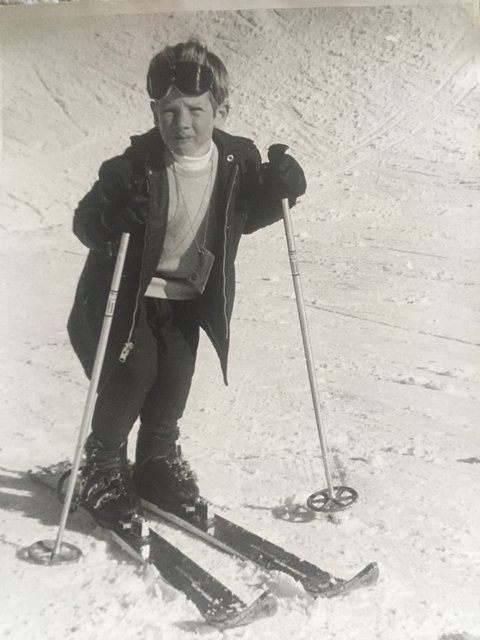
Before the Mohawk
From a ski-standpoint, I grew up in a pretty typical ski school, then went on to junior race team. I was never any kind of racing prodigy, at all, but I certainly was involved in it. That’s a question I’ve always asked, especially in this day and age, we grow up in these ski teams/programs and if you’re not the best racer or freerider, then everybody starts asking: ‘what are you gonna do now? You going to school or this and that’. I was convinced that my skiing had yet to come and in fact, it did. As people quit racing/ski programs, my skiing started to blossom. I was a bit of a late bloomer, technically-wise. As kids start to get cycled out of these programs, it was kind of a ‘what’s next?’ thing for me. I was climbing and discovering the mountains more and more and more.
All of a sudden, I went on an E-ticket ride, the rocket launched and I’m still on that ride, to this day.
I grew up in a ski town, so that was that. South Lake Tahoe was a funny town to grow up in. It was a gambling town, it was a border town, with gambling and sport and lots of outdoor resources. At the same time, it was a vacation place, a very transient lifestyle, but some locals have been there for a long time. I was on the South Shore, there’s definitely a rivalry. North and South –certainly when I was younger—tended to butt heads quite often.
_
Where did you ski? Squaw?
No, no, no! The only reason you’d go to Squaw was to win, beat them! I grew up skiing at Kirkwood, Heavenly, Sierra and we’d drive down to Mammoth a lot, that was a quick drive. We would ski all those places and we would certainly drive up to Squaw and places. There was always so much traffic, we used to hate going to Squaw Valley races, you’d have to get up at like 4:30 in the morning, we knew it was only a half-hour-drive, but you’d get stuck in traffic and that’s still the case. North shore was where all the people, from the city, had vacation homes and they looked down on us because we were the gambling town. They were all upper-class, college-educated types of people and we're all a bunch of freakin’ bums down on the South shore, which was fine with us, we don’t care!
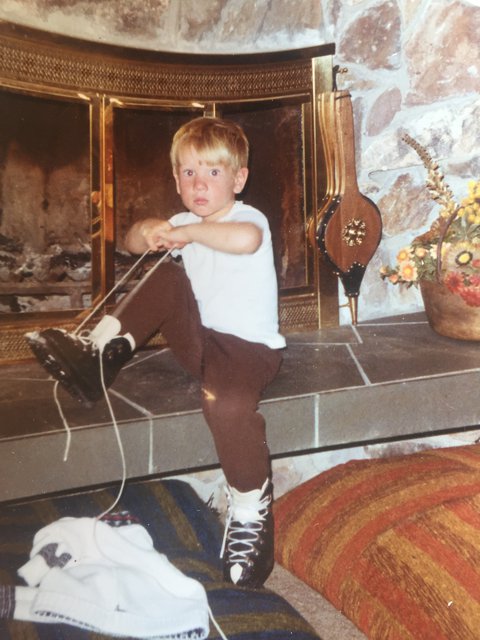
Getting ready to ski, but probably not at Squaw!
Squaw valley had the Olympics, we were like: ‘So? They don’t even have the flag anymore.’ If the weather didn’t change, they wouldn’t have had the Olympics. The Olympics would have been at Slide Mountain, they already had the downhill course set up, as an alternate spot. Wouldn’t that have changed everything? It had been raining the whole week like it always does at Squaw, and they set the courses over on Slide Mountain. Ultimately the rain turned to snow and the Olympics did, in fact, happen at Squaw Valley.
_
As one of the pioneers of freeskiing, who were your ski heroes growing up?
Freeskiing was there, it just had been forgotten. The seeds were set, and I certainly grew up watching ski movies. You had the whole Summit Films crew, who were probably the first freeskiers, to be very honest. They were sponsored by Hart skis, they were traveling pro skiers. They were mountain guides, they were instructors, there was a group of people that skied in the Summit films and if you haven’t seen any, you probably should. So you had your Art Fuhr’s, you had your Tom Leroy’s, you had your Hermann Gollner’s, you had this crew that was skiing in the Summit Films. The films were really progressive and these guys were guys out skiing and representing the products that they were skiing on.
After Summit Films the Hot Dogging revolution took place, so now you had professional freestyle. You had Moguls, aerials, and ballet. You had John Clendenin, Wayne Wong, Airborne Eddie, O’Leary and you had all these guys. Again, they were all professional skiers, now the competition was part of the game. If you go back to Summit Films, there was no competition, other than the reference to ski racing, which they all did at some point in their career, but they weren’t doing it in the films.
Then you go through the Hot Dogging era, now we’ve got an organized form, so for me –as a young ski racer and young skier, in a ski town—I was seeing all these ski films and seeing all this go down. All of a sudden, I was like 13/14/15 years old and: POOF! It was all gone. Jumping is illegal, you’re not allowed to have your skis leave the ground, the Freestyle Tour is gone. I saw a guy win a freakin’ Corvette, I was standing right there, and we thought: ‘Ok, that’s what we’re going to do’
Then all of a sudden, freestyle's completely gone, there is no competition, it doesn’t exist at all. At the same time, ski movies started getting really, really boring and skiing went down this homogenized, resort-style of life.
Sure, it was still going on, because at this time you’ve got Patrick Vallençant and the French ‘Extreme Skiers’, so these people became my influence, to continue this unorthodox, non-organised form of skiing. I have a hard time thinking I’m a pioneer, as much as I’m a reminder of what was already going on, that everybody had forgotten about. I’ve often used the ‘link of a chain’ analogy, I’ve been called ‘the bridge’ by a lot of the old-timers. I know a lot of the hot doggers and they call me ‘the bridge’, because everything that they were thinking about and trying to do, I kind of adopted and shared it with the next generation.
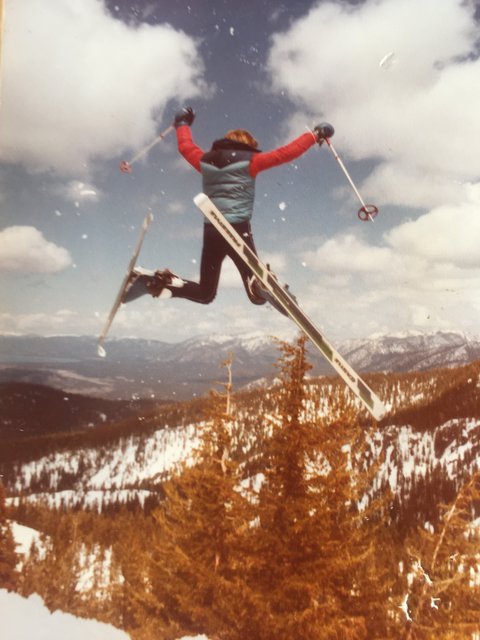
The one thing I don’t like about skiing is that we don’t reference our past enough. I think we do need to understand a little bit about where things came from. We laugh when people do daffies. When someone hangs ten on a surfboard or when someone rides a wheelie on a motorcycle, those are still really respected, really cool and they’re actually quite difficult. When somebody does a daffy or something in skiing, it’s like “haha cool little trick bro” and you’re like: ‘screw you dude. Whatever your triple cork was done back in the 80s by Frank Bare anyway. So whatever. Quite frankly I think you’ve degraded progression. Haha!’
“Blizzard of Aahh’s” was obviously life-changing, how did that happen?
Through my competitive endeavors, I met Geoff Stump, not Greg Stump. I also met Mike Hattrup, as competitors. We were all mogul skiers. Whether it was at regionals or whether it was nationals, you’d kind of hook up with a crew and in the process of competition, you make friends. Geoff’s brother, Greg, was also a former competitor, he’d bought a camera and was toying with the idea of making some ski films. He –like myself—grew up watching the Roger Brown/Summit Films, he grew up watching the Dick Barrymore films. We were all very aware of Warren Miller films, but to be honest, Warren Miller was kind of the generic version of what we wanted to be a part of. There were other people making ski films and we were watching them way more than we were watching the Warren Miller movies. Greg skied in a Dick Barrymore film and he was intrigued by that. It was through their association that I was asked to ski in a film that Greg was making. At the time you would just film your buddies and whatever, that’s what it’s about. They were like ‘oh we gotta have Plake ski in it! He’s from California, he knows the place and he’s freakin’ rad! He’s got his mohawk. He's a freakin’ knucklehead! We gotta have him film!’
We were definitely a band of outcasts. I was asked to ski in the film, I skied well and everybody liked my style. All of a sudden, I’ve skied in a film. That legacy, prophecy, destiny, however you want to say, all of a sudden, what I thought I would be doing –as a 13/14-year-old—now I’m 19/20 and maybe this is going to happen.
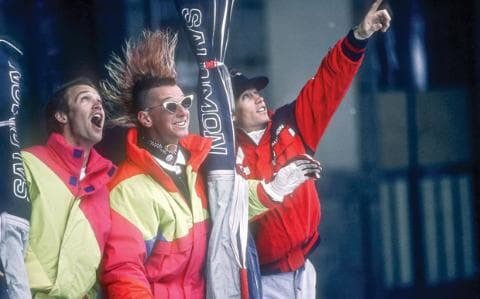
Hattrup, Plake, and Schmidt: Changing the game.
_
Did you guys realize you were making a classic movie?
I broke my leg, the day after I skied in the first Greg Stump movie –or the first one that I did—Maltese Flamingo. They made another film and it had been 18 months since I skied, but things were well, it was all healed up and it was time. I got hold of Hattrup and the guys and said ‘alright dude, here we are. I’m back!’
They said they weren’t sure if Greg wanted me to be in the film, I was like: ‘BULLSH*T! Where are you, right now?’
They were in Snowbird, so I drove all night and surprised them. I basically slammed my way into what ultimately would be the Blizzard of Aahhh’s!. At the time, we didn’t even know what it was, it didn’t have a title.
I skied in Snowbird, then we skied at Squaw because that was my neck of the woods. After the Squaw shoot, Bruce Benedict --who was actually the missing link of all of Stumps films. He was the director of photography, he really helped Greg understand the pictures because they both took beautiful pictures. Bruce who had the technical training and guided Greg through certain things. Bruce asked me if I had a passport. When I said no, he said I should get one.
I knew they were going to Europe and I knew I needed to be there.
As events unfolded, Lynn Wieland --the girl that had skied in a bunch of ski films—got injured and they didn’t know what to do. They were in Chamonix for a six-week shoot and they only had two skiers. Bruce’s forethought said: ‘Get Glen over here right now.’
They flew me over immediately, so did we anticipate it to turn into what it is?
Absolutely not! We were just banging our way through a winter. Even after the film was released, I stayed over in Chamonix for nearly two years. I never came back after that first trip. I had reasons not to come back, that are relatively well known.
I only saw the film, with a live audience, a couple of years ago! For the first time, with a live audience. I missed all the premieres, I didn’t do any promo with Blizzard of Aahh’s, I was over in Europe during all that time. It was quite cool to sit with an audience and yell and scream and do all the cool things we do when we’re watching a film with a group of people on a big screen. I really think that we need to do more of that. Having a premiere in a bar or something, with the movie playing in the background, is nothing like sitting down and watching the damn movie. They did a big projection in Chamonix, about two years ago, and they asked me to introduce the film. I was literally on stage when it hit me that I have never watched this, with a group of people. It was trippy actually.
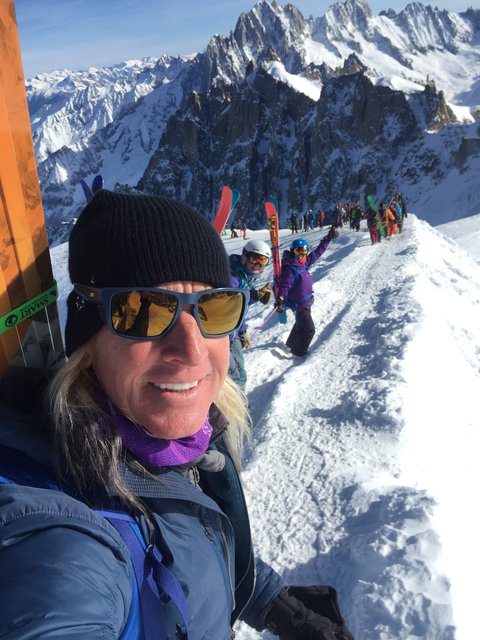
_
What made you stay in Chamonix?
For me, it was the next step. I’d been in California, I knew there was other stuff going on. I was aware of the European influence on the sport and I knew that if I was going to be a pro skier, then I’d better go to where skiing was a respected activity. That was not in the United States. I had to get to where skiing was valid. I had a lot of legal problems going on, I had been in trouble, I grew up in a gambling town, so I had drug problems in my life. Not only personal, but also judicial!
Going to Chamonix was a way for me to run from some problems that I had. I was looking at quite a few years in prison and I didn’t see that in my future, so I had to run. When you’re young, you make decisions and my decision was run and run I did. I’ll be honest, I did not know Chamonix from Zermatt, I didn’t know where I was going, I just knew I was going to France. If you put a gun to my head, three or four days into Chamonix, and asked me where I was? I’d be like: ‘uh, what’s the name of this place again? There was no: ‘I gotta get to Chamonix!’, that wasn’t part of it, I just knew I had to get to Europe and that became a possibility. Just to back that up, because of some of the legal issues I had, I had no job, I was skiing, I dropped out of school because I was skiing. I was a struggling artist, whatever you want to call me. When you go into court and they ask you what you do and you go:
Glen: ‘well I won regionals, I’m ranked sixth in the nation, but, um, so I ski!’
Judge: ‘oh ok, so do you make a living doing that?’
G: well no, not really.’
J: ‘Oh ok, so are you on the US Ski Team?’
G: ‘I don’t want to be on the U.S Ski Team, I could be, but I don’t want to be. Yes, I qualify, but I’m not competing on the U.S ski team.’
J: ‘So what are you doing Mr Plake?’
Fast-forward two and a half years, I’m in court and I’ve skied in a ski film that was quite positive. I have five different companies that are willing to sponsor me and have me work with them, to help them sell and design products. I’m, in fact, skiing in another film next year. When the files were charged, it was a bit of a dark time in my life, now I have a lot of opportunities and I would appreciate some leniency from the court. Now I have a compelling story, but it was my association with skiing in Europe that allowed me to have that story when I got back to the U.S. It would never have happened if I’d stayed in the U.S.
That’s kind of the long version of why I stayed over there, other than I was a felon and I had to run!
I was going to join the French Foreign Legion, I don’t know what I was going to do, but I wasn’t going to go to jail for as long as they wanted to put me in there.
From a skiing-standpoint, I was 20-years-old, just landed in Chamonix, I had a season pass that was good for the rest of the year, I had three pairs of skis and twenty-dollar bill! Why wouldn’t I stay in Chamonix? What was I going to go back to the U.S for? I sold my car, to get to the airport. I didn’t have a place to live, I didn’t even have a return ticket. Everybody was packing their bags to go home and I’m like: ‘I’m not going home, I have no reason to go home and why would I leave this place?’
From a personal growth, I had already climbed a bunch of mountains in the Sierra, my skills were strong. It was the next step in my own personal development. Let’s face it: I love my beloved Sierra’s, but the mountains are a little bigger in Europe. The Alps are bigger than the Sierra’s and the Tetons for that matter!
_
What exactly were those legal problems?
It was all drug-related. I had trafficking, I had intent to sell. I was selling drugs, that’s how I was getting by. I mean, I was working my butt off, but I was supplementing any income that I had by pedaling a little and I got caught. I wasn’t selling guns or anything, I was doing what a lot of people were doing. I just happened to get caught. I just saw the news, they released 500 people from prison, that were serving time for miscellaneous drug-charges. That’s exactly what I had; a bunch of miscellaneous drug-charges that, quite frankly, aren’t even illegal now, in the state of California. Which is why I don’t support legal-marijuana! I’m like: ‘BULLSH*T! you gotta hide it! You gotta get busted like I did! Go sneak around like the rest of us had to!
You said you like to keep your winter and summer separate. How do you do that?
I love waterskiing. I love playing with our 4-wheel-drive Jeeps. I love playing with the boat. I just really enjoy those things. I also love mountaineering and climbing. I love my summertime mountain activities, but I also really love lake-life, because I grew up on a lake. I love sailing, swimming and all the activities associated with lake-life. At the same time, I love my winters. I love everything about winter and even more so than winter, I like Spring. The long days, tons of snow on the ground. If you took away December and told me I’d never ski another December, I’d be like: ‘Yeah, ok, whatever.’ I wouldn’t miss it, there’s plenty of other days to ski. To answer your question: America, below 6,000ft, is a really fun place to be. I can ride my dirtbike, I can throw my boat in the water, I can basically do anything I want, including shoot a gun right out my frickin’ door. It’s a very free country, below 6,000ft. As soon as you get above 6,000ft –this a broad answer, but let’s just say 6,000ft—then everything is regulated. It’s all National Park, it’s all National Forest. Don’t go up there, it’s a ski area. It’s this, it’s that. It’s all homogenized and weird. You’re not allowed to go up there. It’s a State Park and blah, blah, blah…’
In Europe, above 6,000ft, is no-mans-land. Have at it! They give you the lift, they give you the hotels, they give you the refuges. Go for it dude! Anything you want up there! Okay, you’ve got a few National Parks, but in general, if you’re in the mountains; have at it! Go have some fun, they’ll help you get up there!
Conversely, it’s really difficult to throw your boat in the water in some lake in Europe. It’s really difficult to just swing your leg over a dirtbike and just ride in any direction you want, from the house.
My interests are water-based. I’m definitely a water-baby, so in my summers, I have to have the freedom that unregulated-bodies-of-water provides. My other passion, riding bicycles, ok now we’re over in Europe. Riding bicycles in the US is not so wonderful.
I keep it separate by doing different activities, depending on where I am. My friends in Europe, cannot believe the life I lead in America and vice versa, if my friend from America come visit me in Europe they go: ‘What in the hell is going on here?’
It’s pretty funny. I definitely keep them separate.
https://www.instagram.com/p/BtmkUP_nvtL/
_
The Glen Plake Mohawk recipe:
2 sachets of Knox Original Gelatine (unflavoured)
1 cup 8oz hot water
Spray bottle
Put ingredients in a bottle and shake until mixed
*will foam up -let it settle
Comb dry hair on the table. Spray from roots out to ends.
Blow- until dry, then flip like a pancake repeat spray/blow dry.
Finish Mohawk in mirror, by holding it up using MegaHold hairspray and blow drying each side to Finish.
Hot water shower to remove (bio/green process)
In part 2, Glen lets us know what he thinks about modern freestyle skiing, media and competitions...

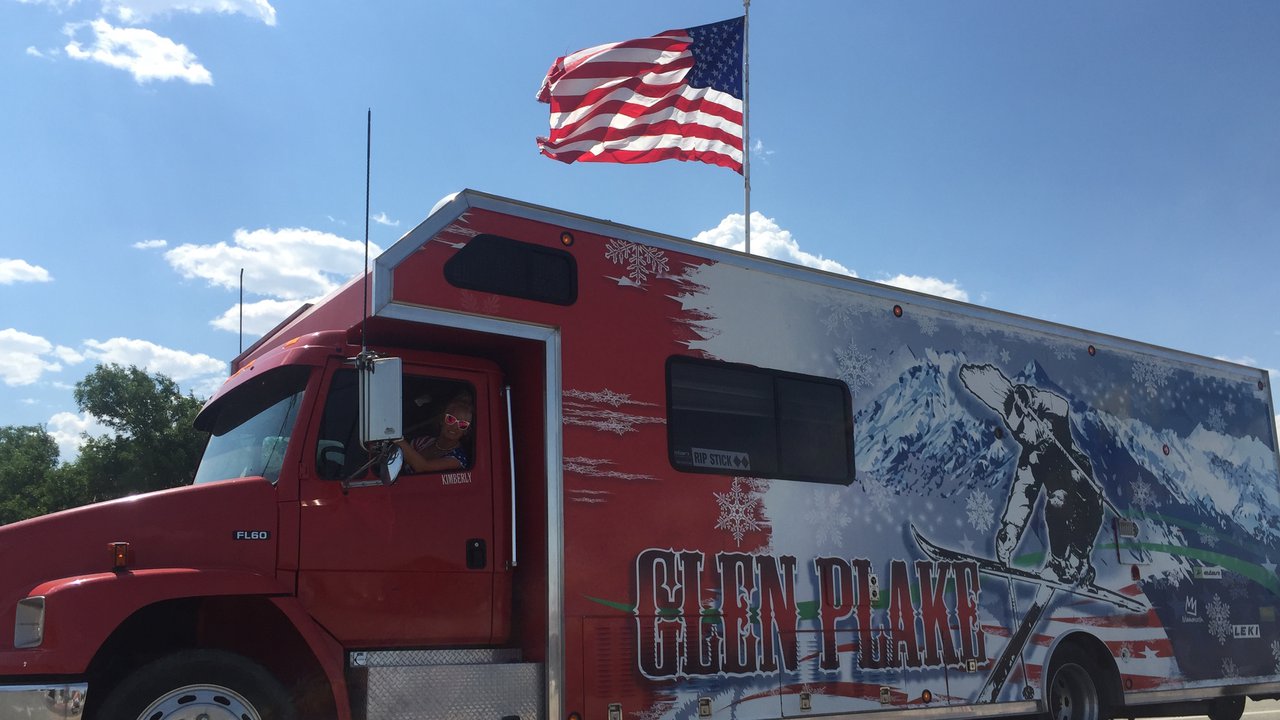
Comments